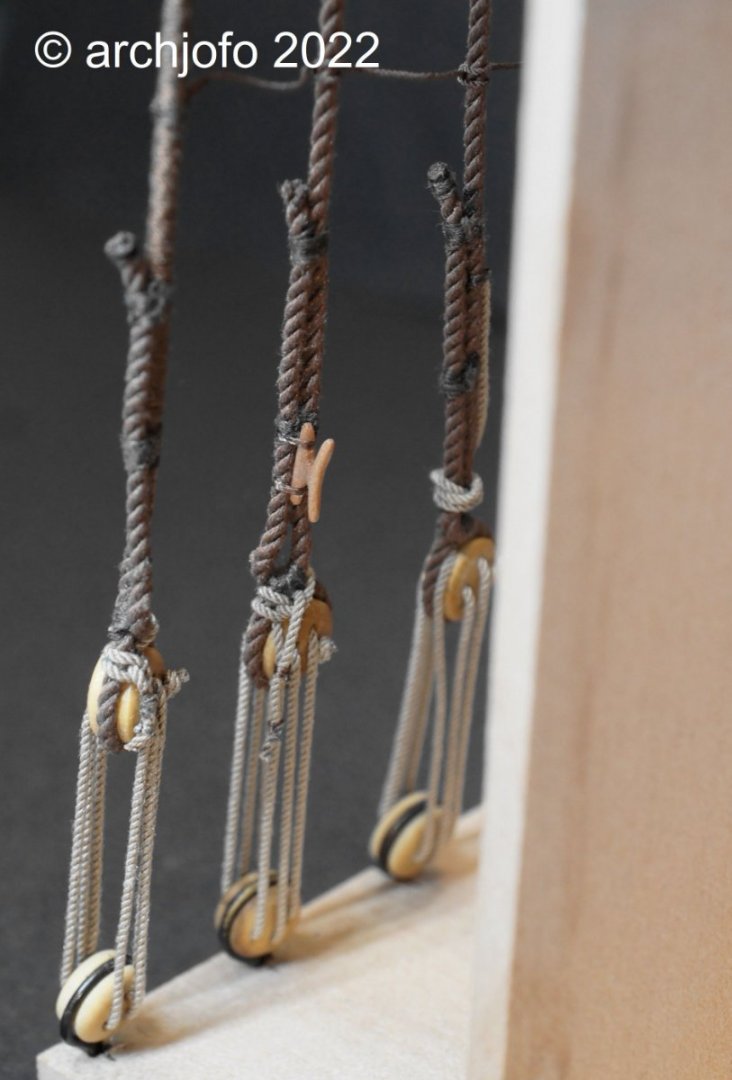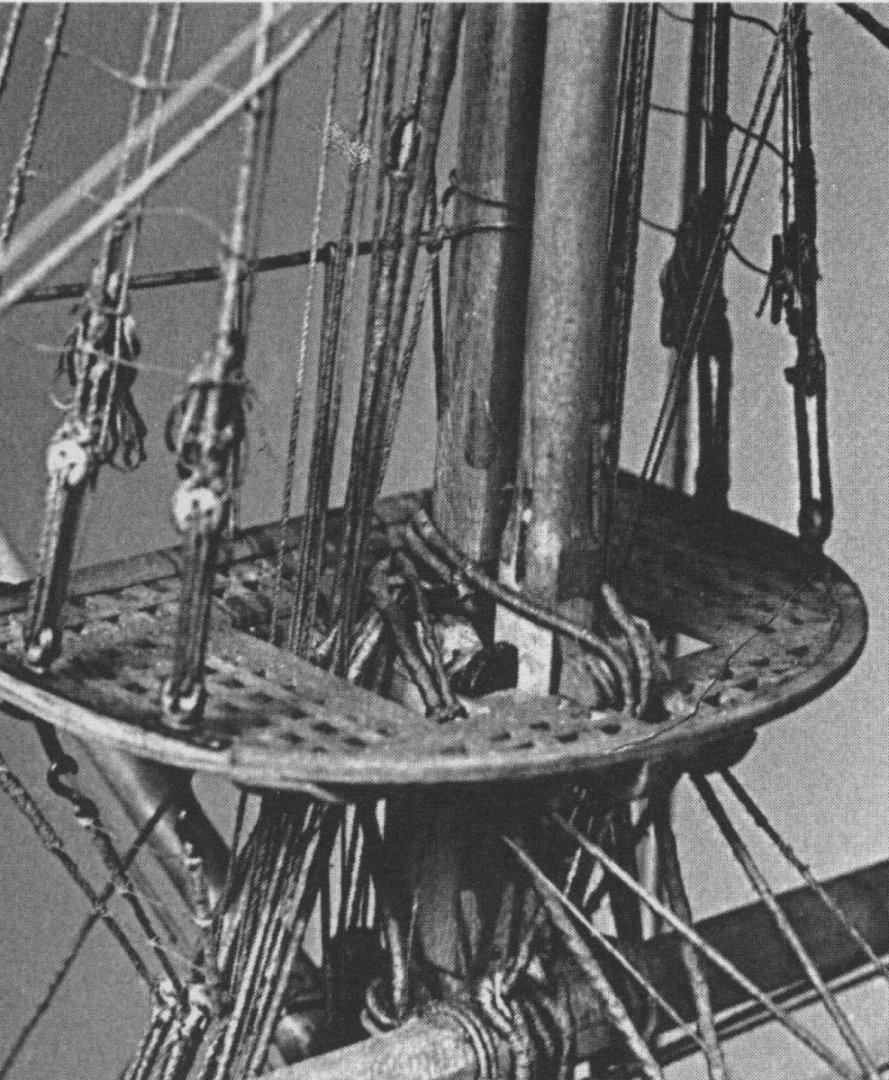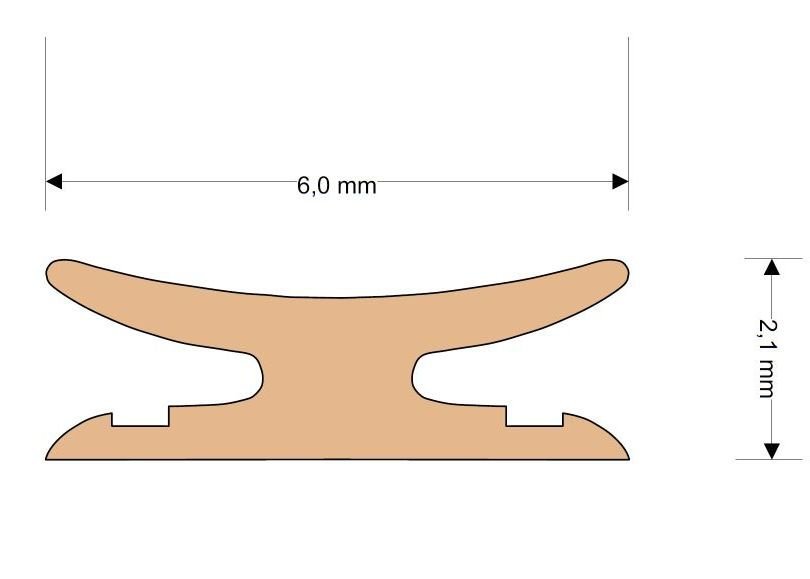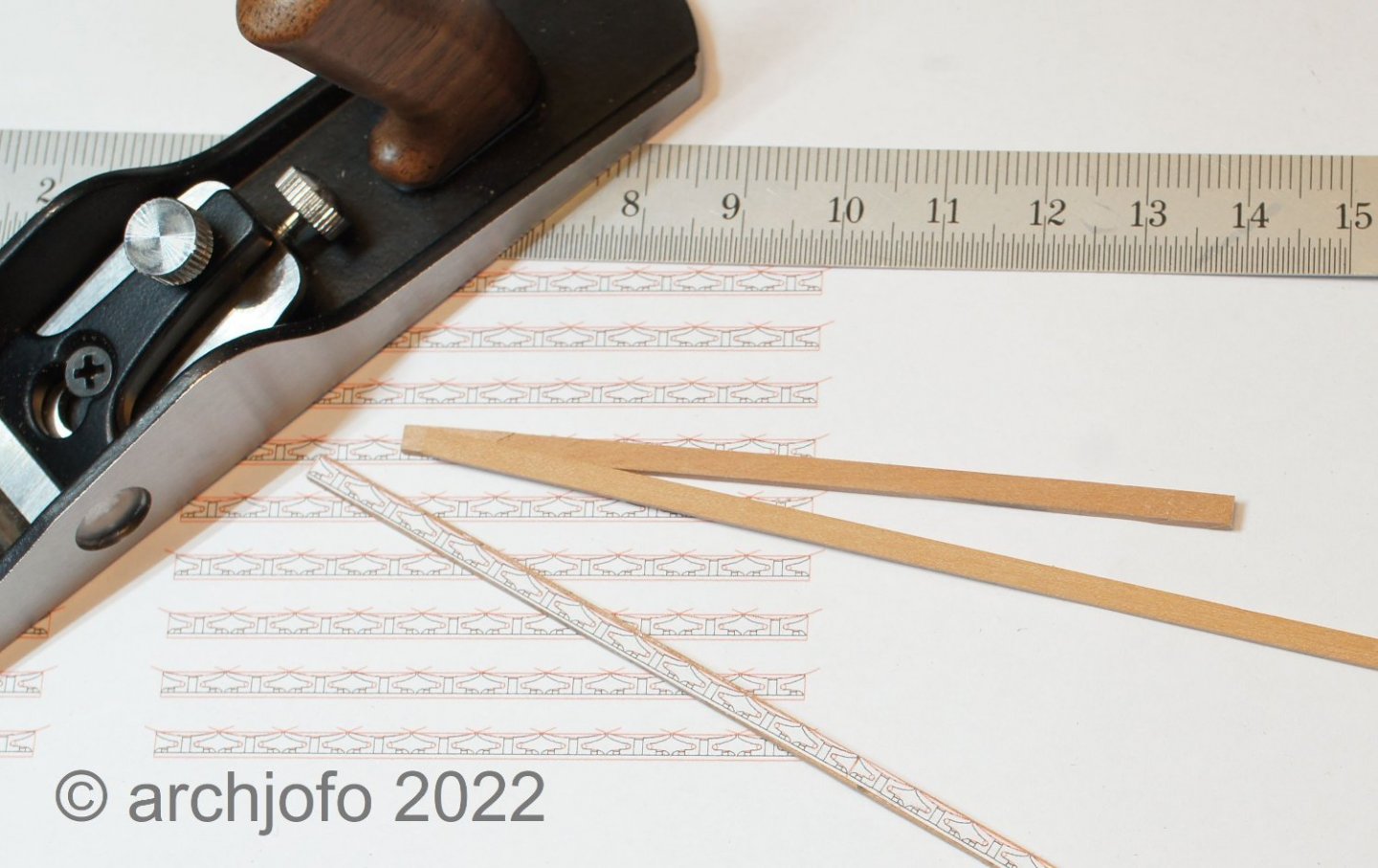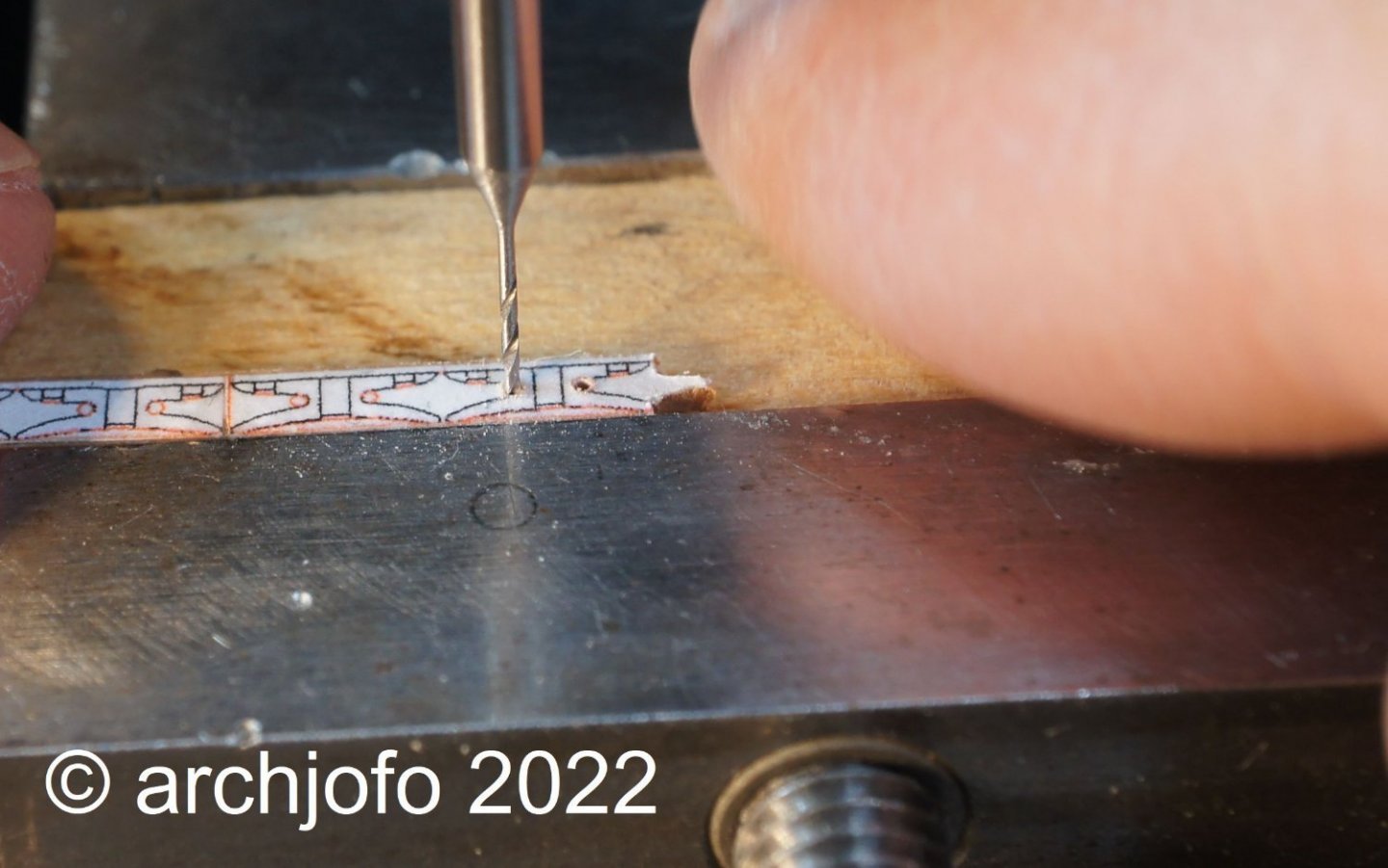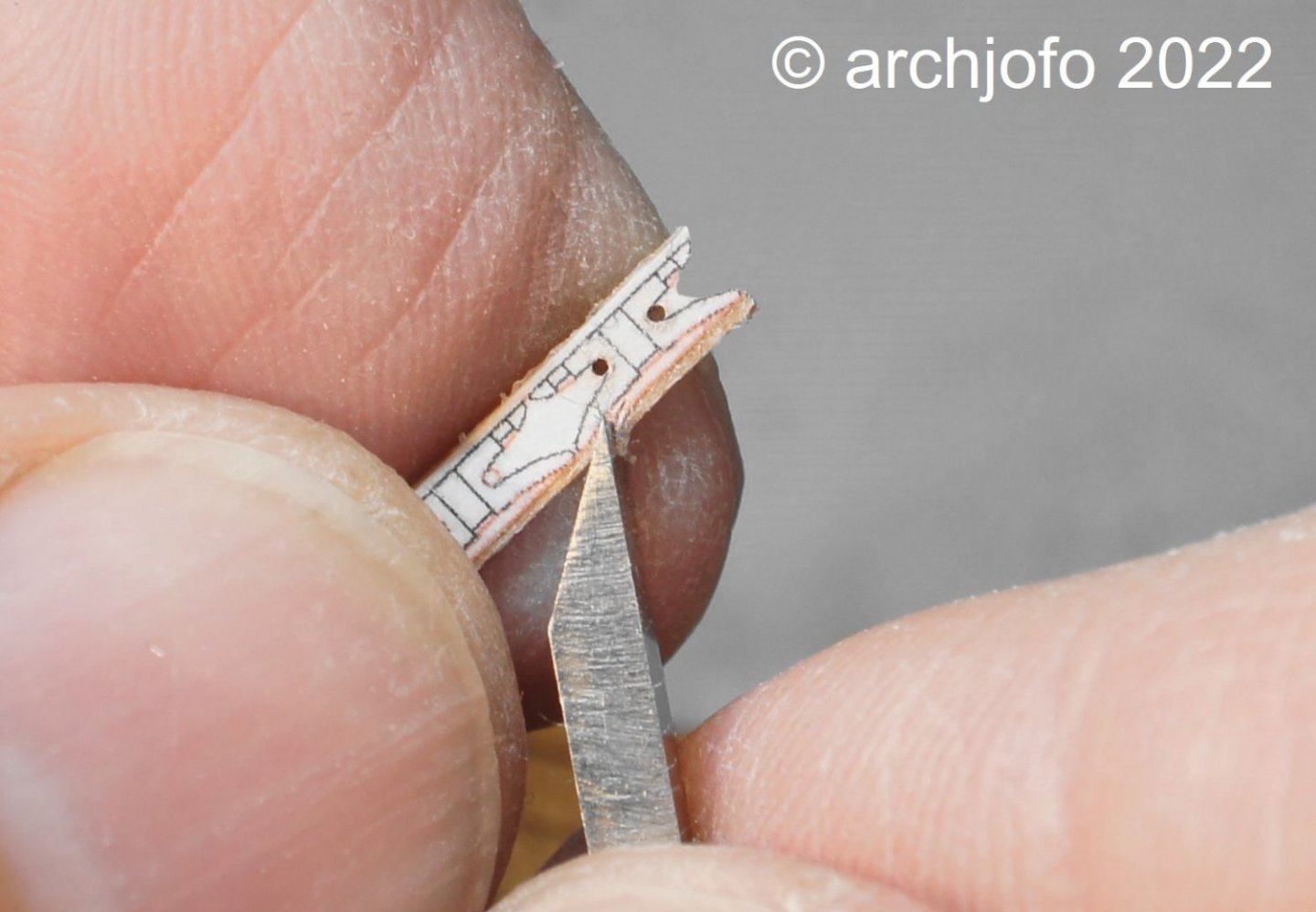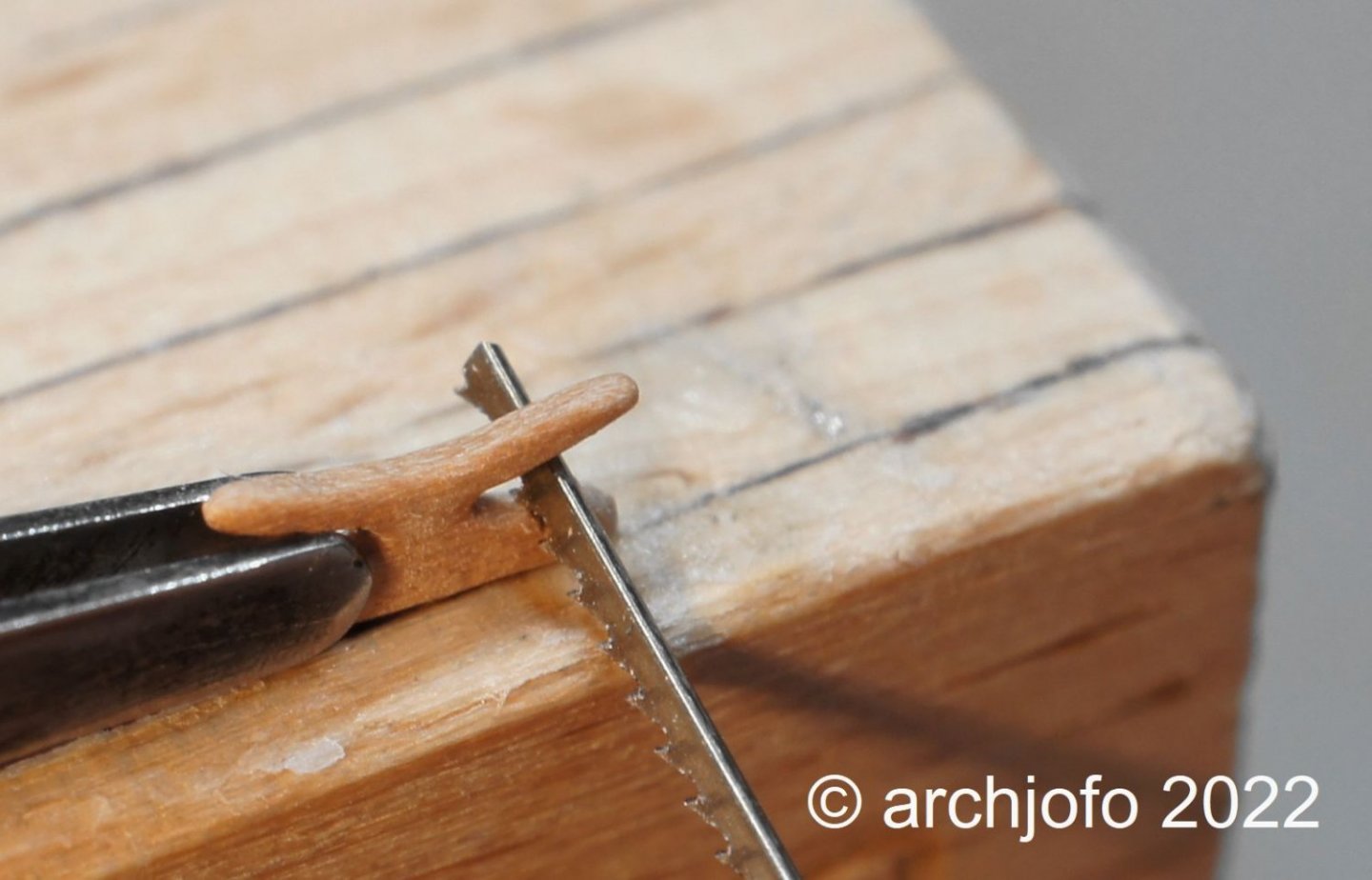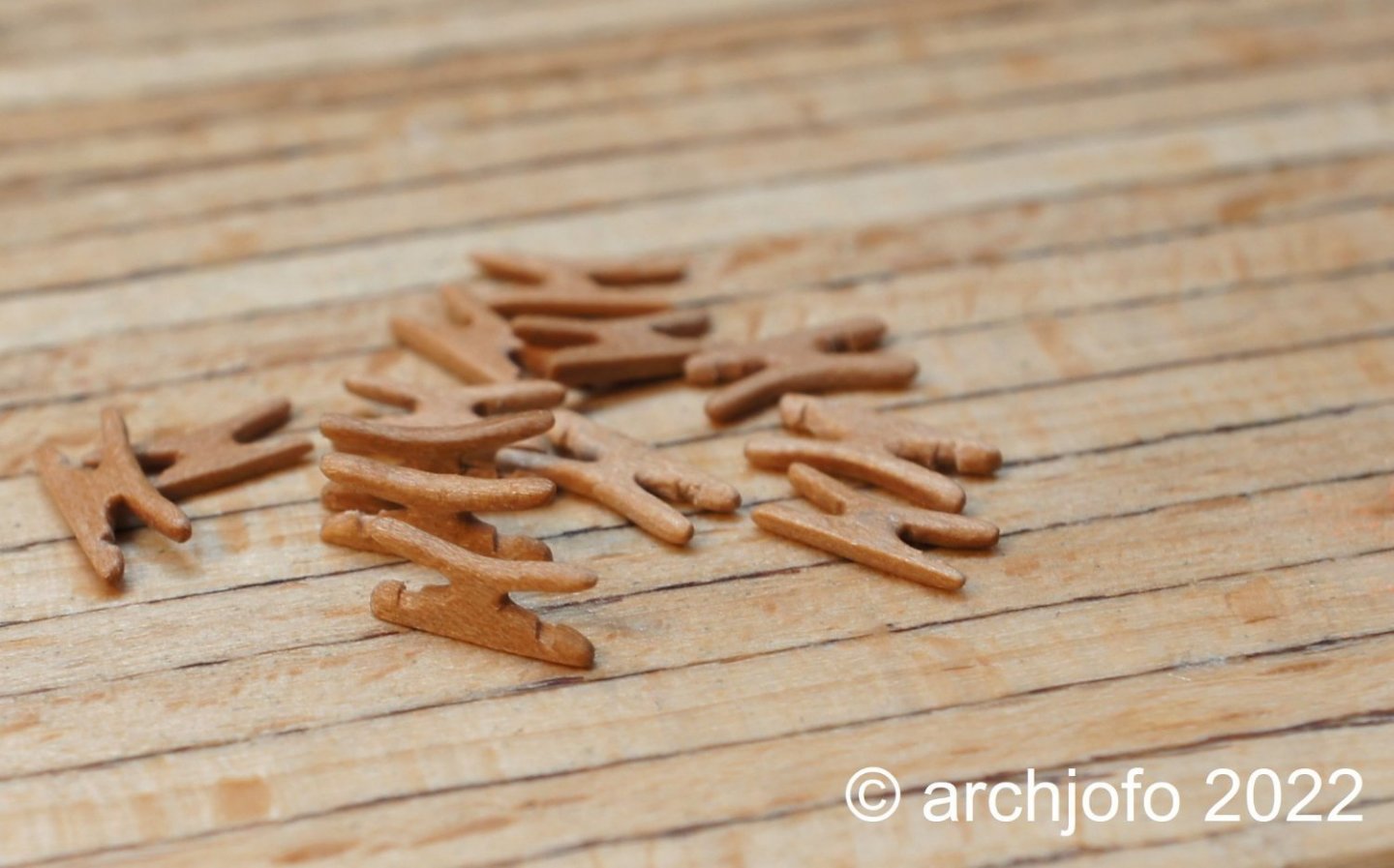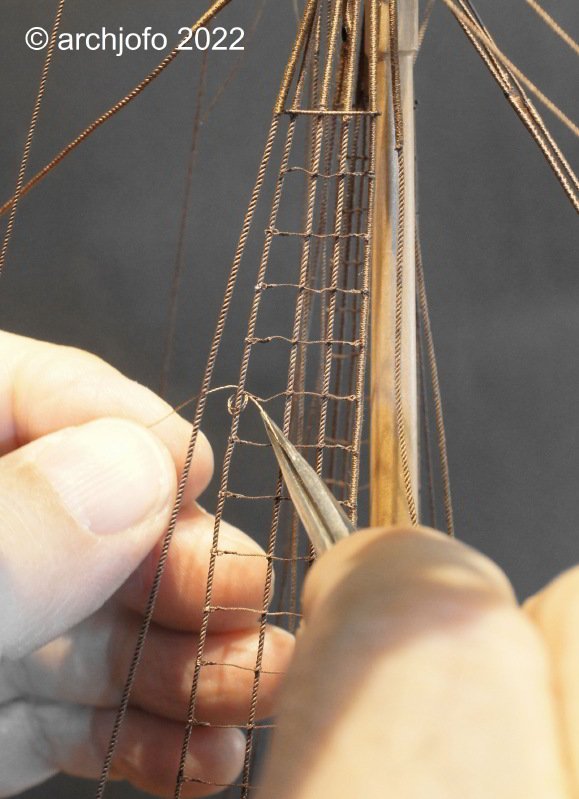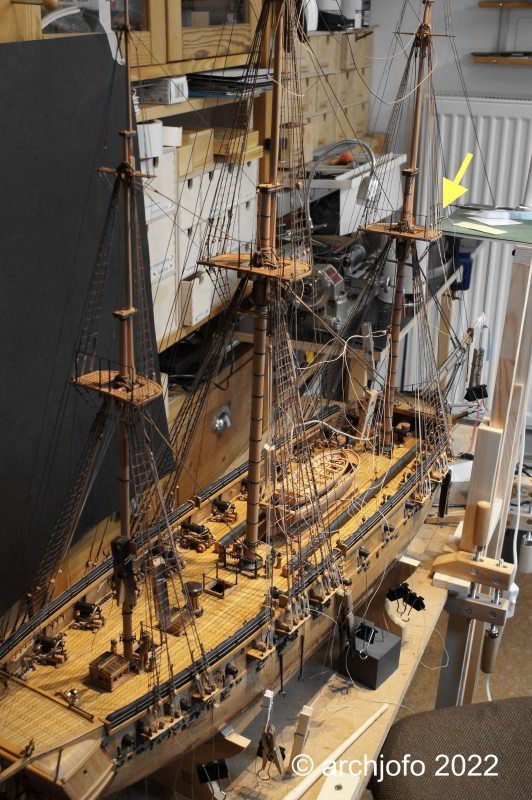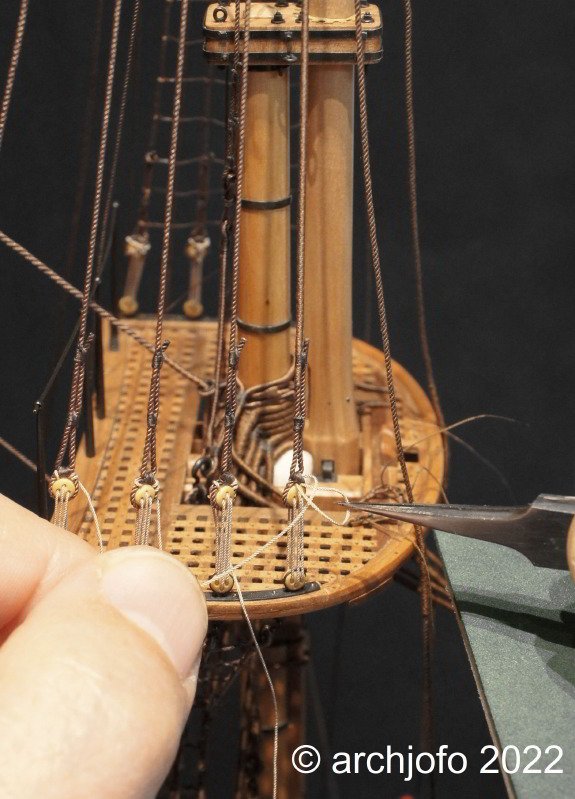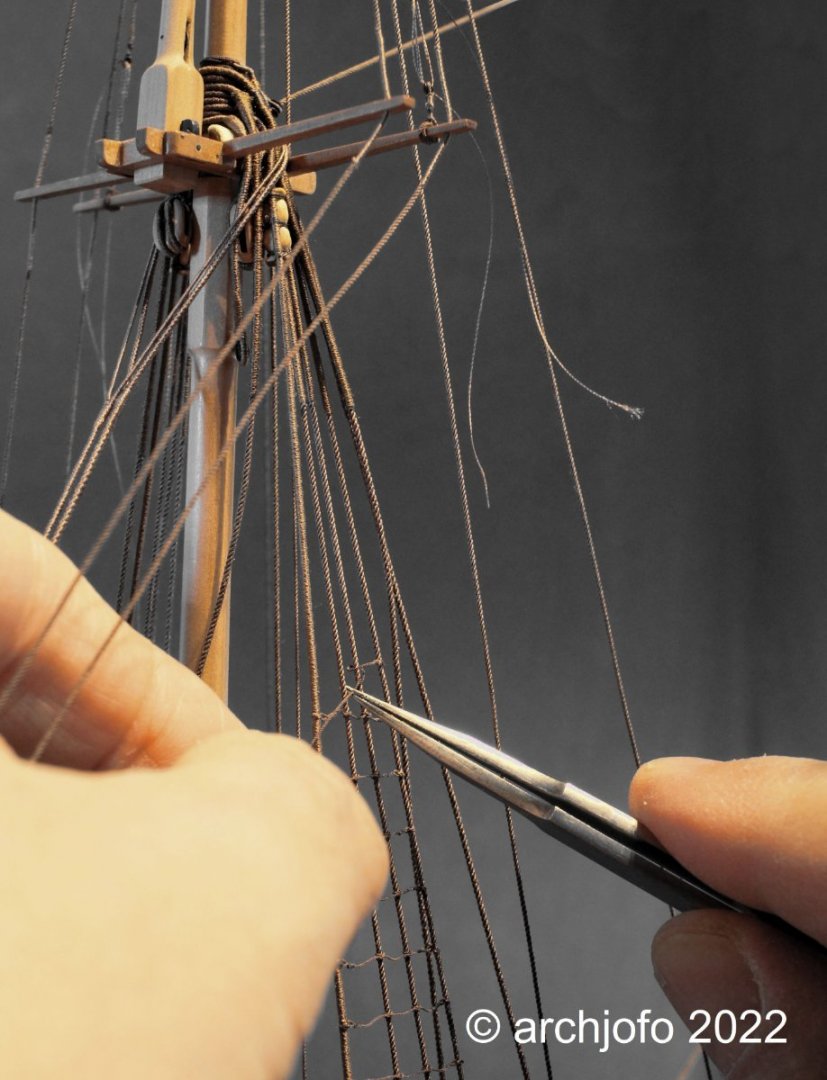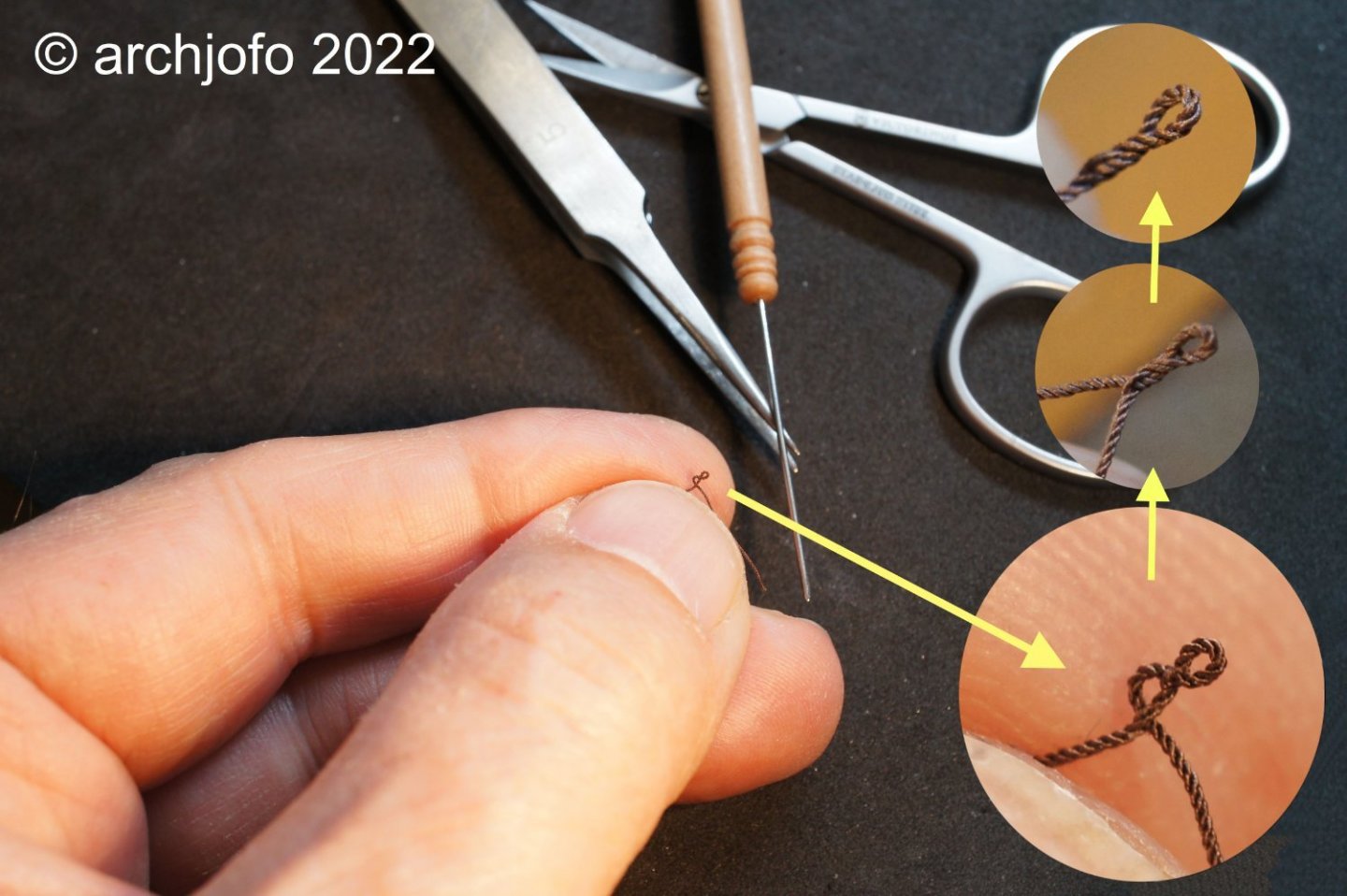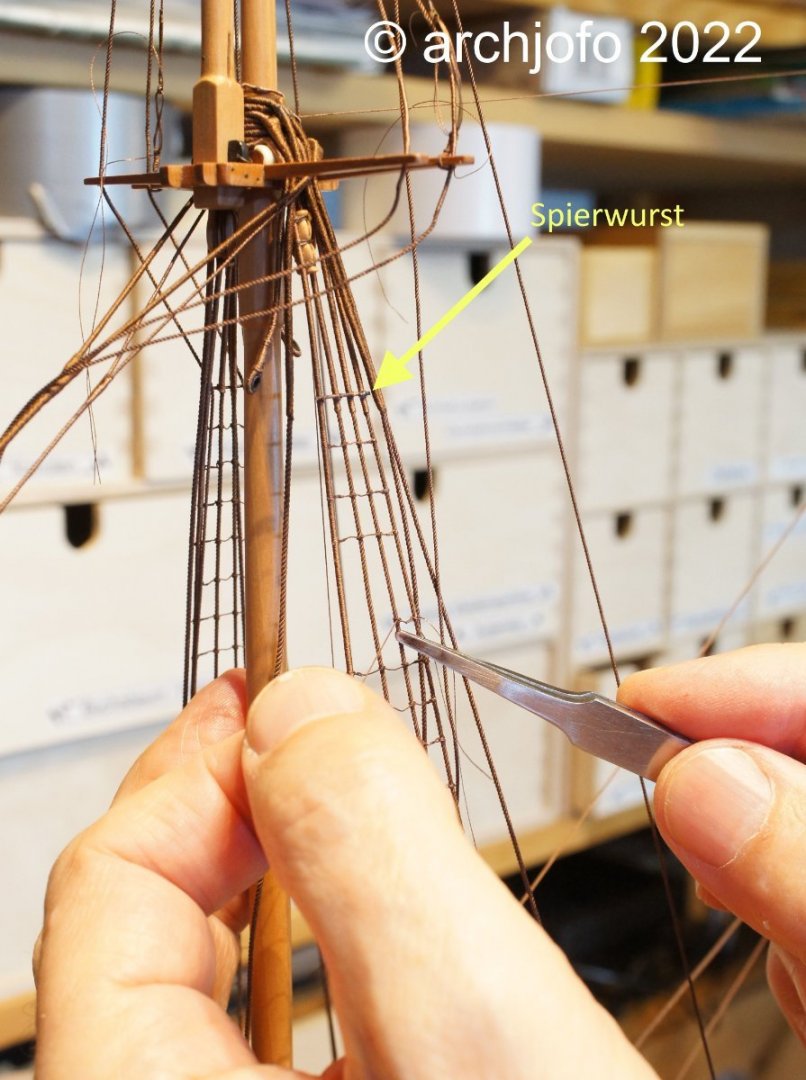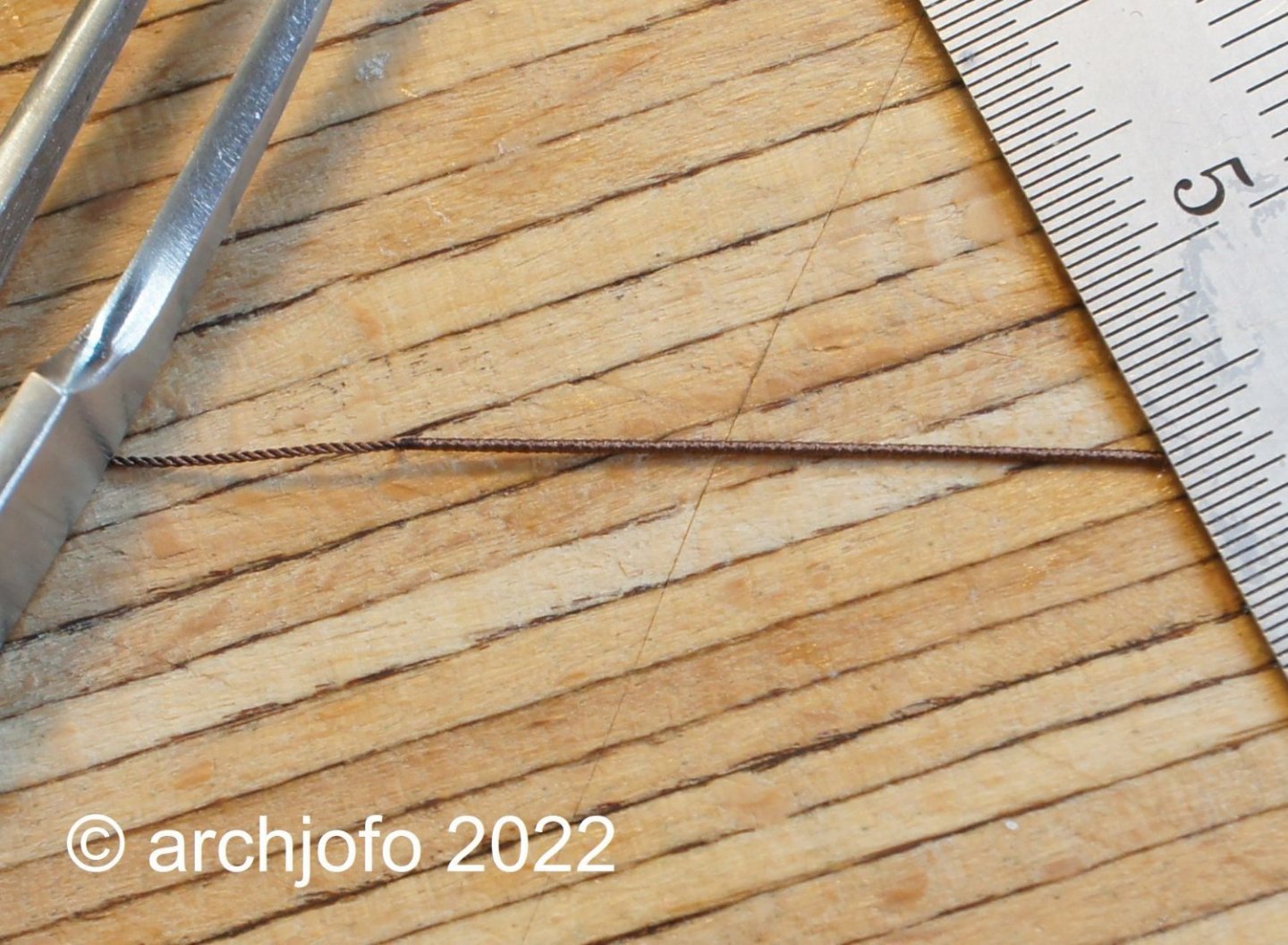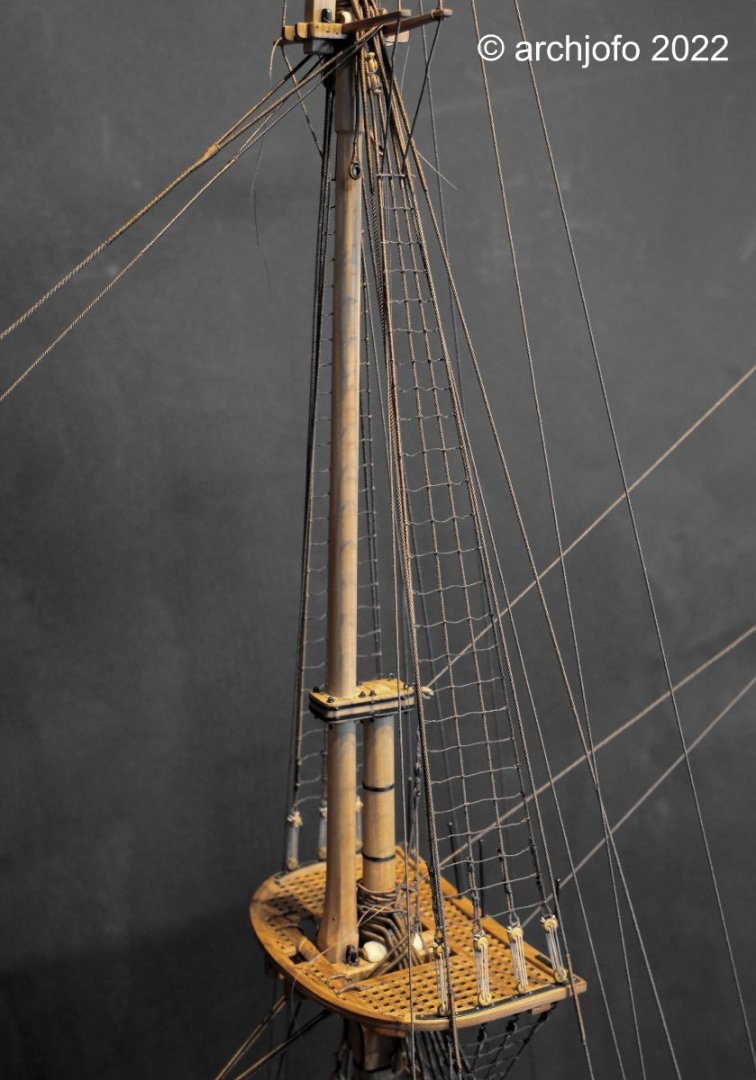-
Posts
1,495 -
Joined
-
Last visited
Content Type
Profiles
Forums
Gallery
Events
Everything posted by archjofo
-
@Gahm @albert Hello, thank you for the nice compliments. Of course I would also like to thank you all for the many LIKES. Continuation: Cleats for the topgallant lifts and royal lifts In the meantime, the cleats have been grooved for the central lashing and are ready to be tied down. After temporarily securing the cleat to the topmast shroud, I begin the top and bottom tying. Then I rotate the cleat to its final position aft and complete the process with the center lashing. The last picture shows the two cleats of the starboard side topmast shrouds of the foremast. This is where the lifts of the topgallant yard and royal yard will be attached later. To be continued ...
-
Continuation: Cleats for the topgallant lifts and royal lifts Since tying the cleats to the shrouds did not turn out to be as problematic as originally feared, I went a step further to approximate the original method of execution. Source: "Le gréement des navires anciens (1700-1850)", Gérard Piouffre The following picture shows the result: Accordingly, I will now attach the cleats for the lifts of the topgallant yards and royal yards to the topmast shrouds. To be continued ...
-
Continuation: Cleats for topgallant lifts and royal lifts Mostly it comes differently than one thinks! So in this case. While I had thought that binding the filigree cleats to the topmast shrouds would be very difficult, my first attempt showed that it would be relatively easy. Before I started with the shrouds for this model, I first built a corresponding jig for experimental purposes. This served later among other things also with decisions for attaching the ratlines. And now it served to test how best to attach the cleats to the shrouds. The trick, if you can call it that at all, is to tie the cleats comfortably to the shrouds from the front, and then simply turn them backwards to the desired position. To be continued ...
-
Cleats for the topgallant lifts and royal lifts I almost forgot! Wasn't there something else with the shrouds? There are a few details I'd better mention now. The description of the monograph for La Créole itself does not clearly state how the lifts for the topgallant yards and royal yards are to be attached. As far as I could tell from the description, the lifts were attached somewhere in the area of the top. On the original photos of the Paris model of the La Créole, you can clearly see two cleats on each of the topmast shrouds. Until now, I could not clearly identify the ropes used there. However, after some research, my suspicions were confirmed. These are the lifts for the topgallant yards and royal yards. Source: Monograph by J. Boudriot, detail of original model The next step was to clarify the shape and size of these cleats, a total of 3 x 4 pieces, which I derived from the original photograph and drew. I made the cleats from service tree. The following pictures show different stages of the production. The last picture shows the result. Attaching these cleats to the topmast shrouds will probably be another small challenge to master.
-
Completition: Ratlines for the topmast shrouds - Enfléchures It has been quite a while since I started attaching the ratlines for my French corvette at the lower shrouds. Today I was able to tie the last ratline knots at the starboard side of the topmast shrouds and with the last binding the chapter -ratlines- was finished. Before I start to make the yards, I still have some rest work to do for the standing rigging, e.g. - Fixing the topgallant shrouds - Catharpins for the topmast and topgallant shrouds - Fore topmast- and fore topgallant stay To be continued ...
-
Hello, thanks to everyone else for your interest. What is the saying? Little by little the bird builds its nest ...😁 So it goes on here with small steps ... ratline for ratline ... Continuation: ratlines for the topmast shrouds - Enfléchures The last stage for the installation of the ratlines (ø 0.25 mm) was initiated, namely with the final fixing of the lanyards of the starboard side topmast shrouds. On the following picture I have marked the corresponding place with an arrow, where work is going on at the moment. The next picture shows the fixing of a taljereep with the tweezers. After fixing the lanyards of the topmast shrouds, the knotting of the ratlines can be started in the way already described several times. To be continued ...
-
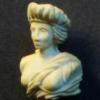
HMS VICTORY 1765 by albert - 1/48
archjofo replied to albert's topic in - Build logs for subjects built 1751 - 1800
That is simply an outstanding performance. Master class ! -

NAIAD 1797 by Bitao - 1:60
archjofo replied to Bitao's topic in - Build logs for subjects built 1751 - 1800
Fantastic work ! -
@albert @mbp521 Hello, thanks for your nice comments, and all the others for the many LIKES. Continuation: Ratlines for the fore topmast shrouds - Enfléchures In the meantime, I have started working on the port side ratlines (ø 0.25 mm) of the fore topmast shrouds. These are already about three quarters made, as can be seen in the following pictures. On the last picture I show again how the simplified splice for binding the ratlines to the outer shrouds is made step by step. For lifting and inserting the end of the rope twice between the strands, I use an appropriately prepared cannula, as already reported and shown. The end of the chapter -ratlines- is within reach. To be continued ...
-
@shipman Thank you very much, also for the interest in my work,especially since I can't deliver anything new. I have already started with the ratlines of the topmast shrouds. In this respect, I already see a silver lining on the horizon ... 😁 The hand has healed well so far. However, due to the long immobilization with splint the fingers are a bit rusty. But it is getting better from day to day.
-
@markjay @GrandpaPhil Hi, thank you very much for the good wishes. Hello colleagues, after a short creative break ... 😁... we continue here again: Continuation: Ratlines for the topmast shrouds - Enflechures With the addition of the ratlines for the topmast shrouds, it was necessary to clarify how the futtock staves are to be made here. In contrast to the more massive futtock staves of the lower shrouds, made of served brass rods, I used a rope with ø 0.35 mm for the topmast shrouds, which was soaked with super glue before serving. After fixing the futtock stave, I could attach the last ratlines of the port side main topmast shrouds. So the chapter -ratlines for the main topmast shrouds- is done: Soon I will continue with the ratlines for the fore topmast shrouds to finally close the chapter -ratlines- for this model. To be continued ...
About us
Modelshipworld - Advancing Ship Modeling through Research
SSL Secured
Your security is important for us so this Website is SSL-Secured
NRG Mailing Address
Nautical Research Guild
237 South Lincoln Street
Westmont IL, 60559-1917
Model Ship World ® and the MSW logo are Registered Trademarks, and belong to the Nautical Research Guild (United States Patent and Trademark Office: No. 6,929,264 & No. 6,929,274, registered Dec. 20, 2022)
Helpful Links
About the NRG
If you enjoy building ship models that are historically accurate as well as beautiful, then The Nautical Research Guild (NRG) is just right for you.
The Guild is a non-profit educational organization whose mission is to “Advance Ship Modeling Through Research”. We provide support to our members in their efforts to raise the quality of their model ships.
The Nautical Research Guild has published our world-renowned quarterly magazine, The Nautical Research Journal, since 1955. The pages of the Journal are full of articles by accomplished ship modelers who show you how they create those exquisite details on their models, and by maritime historians who show you the correct details to build. The Journal is available in both print and digital editions. Go to the NRG web site (www.thenrg.org) to download a complimentary digital copy of the Journal. The NRG also publishes plan sets, books and compilations of back issues of the Journal and the former Ships in Scale and Model Ship Builder magazines.




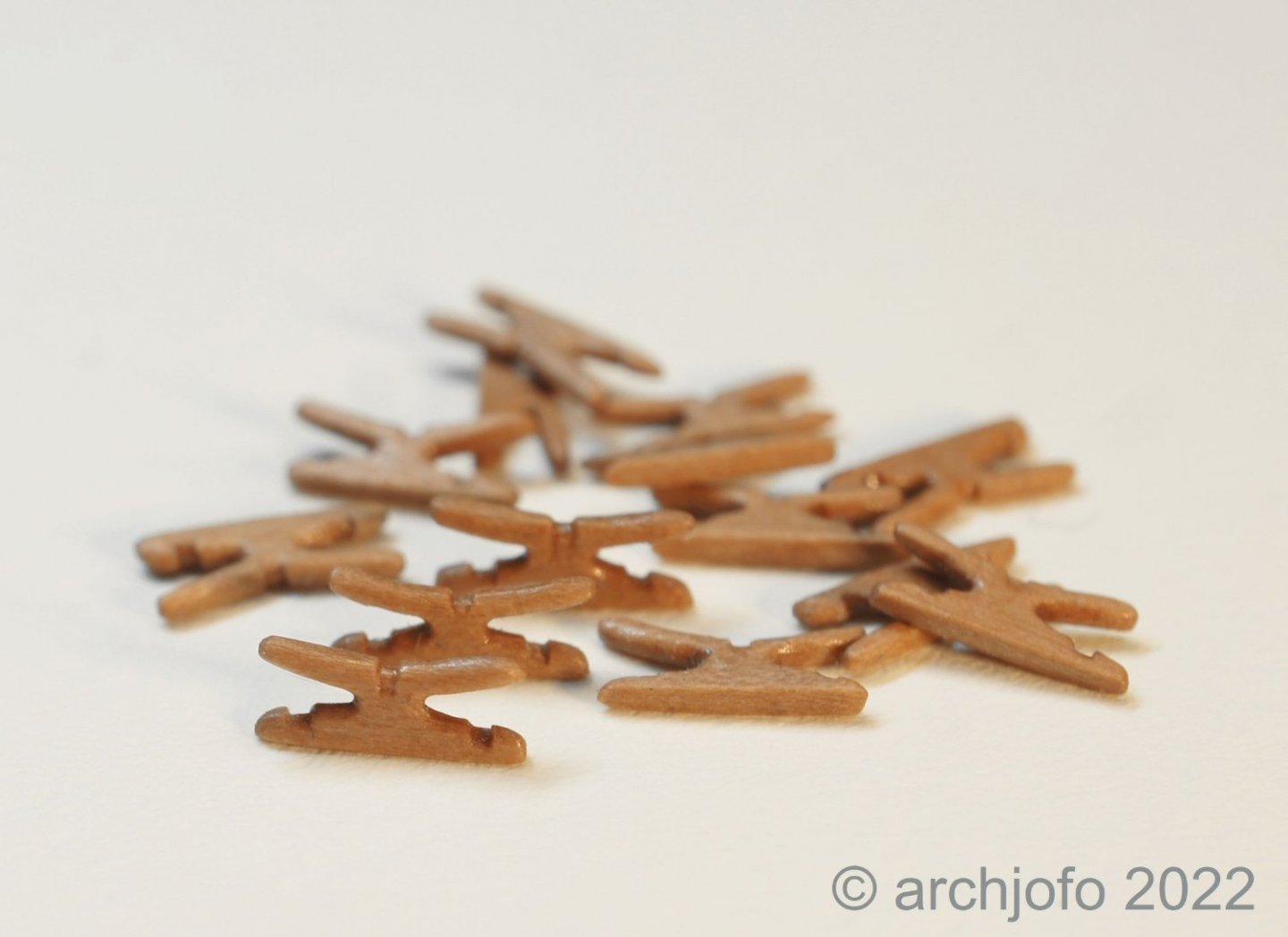
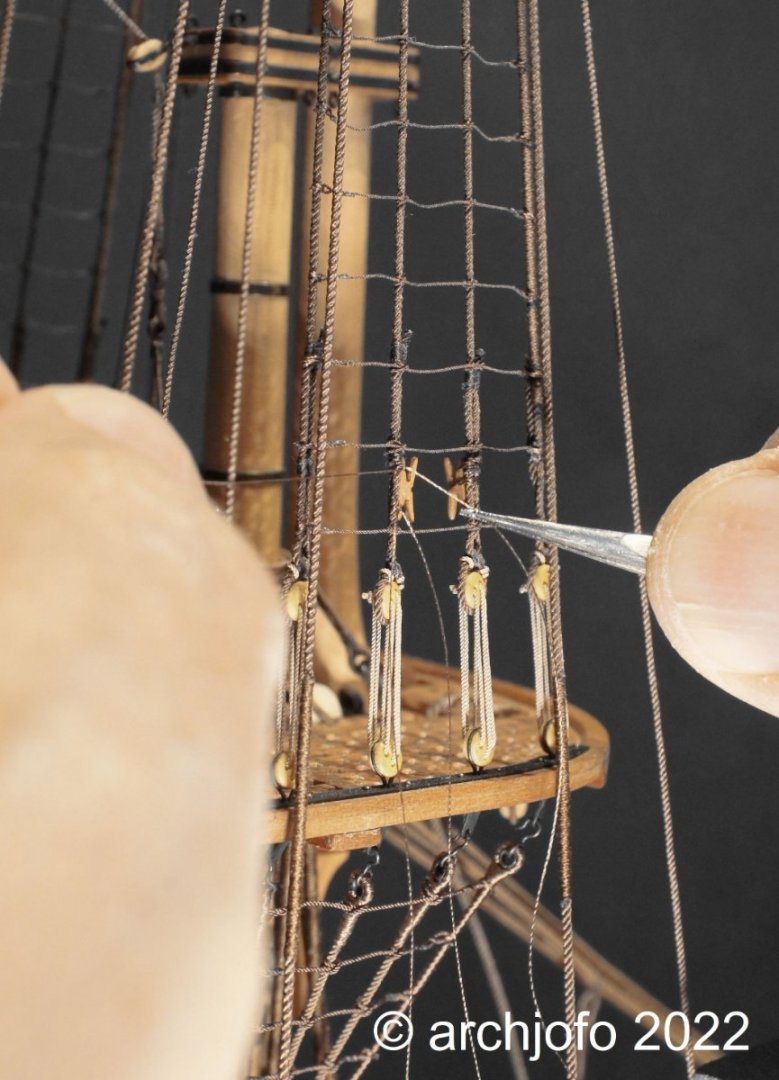
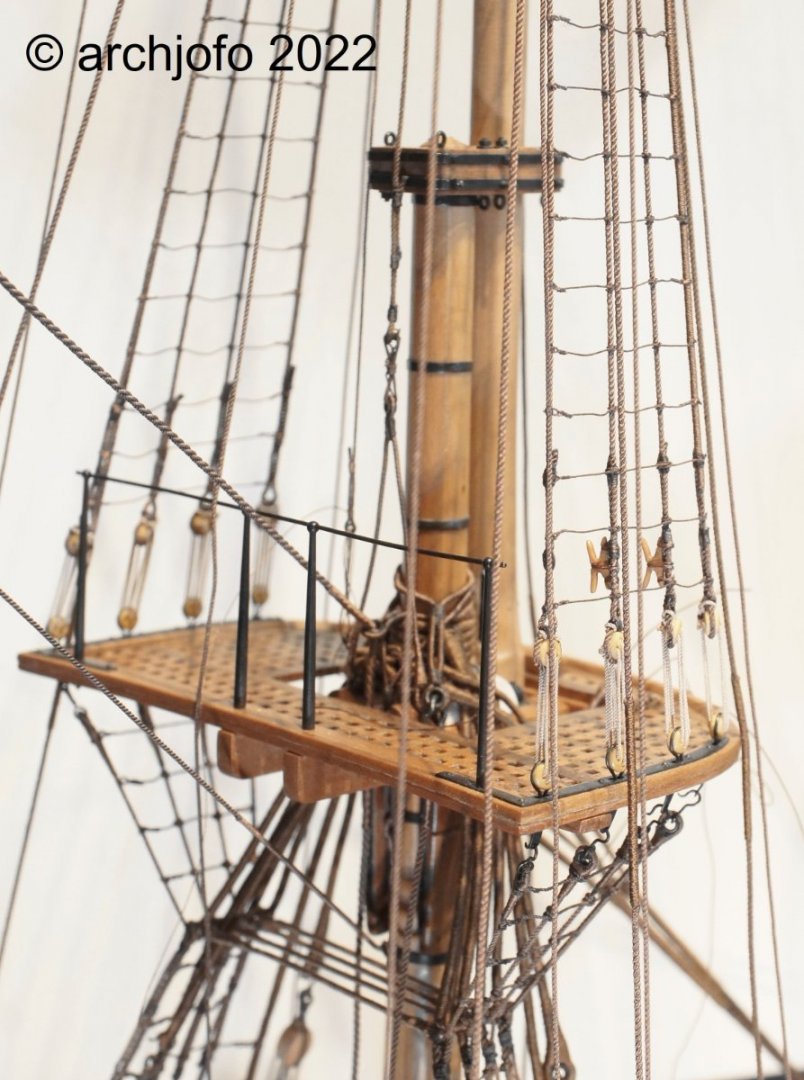
.jpg.7ac193fc3f30f0c2fba71e6e00d1f995.jpg)
